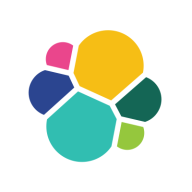

VMware Aria Operations for Applications and Elastic Observability compete in the observability and performance management sector. Elastic Observability holds the advantage with its advanced analytics capabilities, suited for feature-rich environments.
Features: VMware Aria Operations for Applications offers comprehensive application monitoring, predictive analytics, and workload optimization. Elastic Observability provides real-time insights with powerful log analysis, advanced data visualization tools, and extensive customization options.
Room for Improvement: VMware could enhance its analytics capabilities, offer more customization options, and improve its support for non-VMware environments. Elastic Observability could improve ease of integration with third-party tools, simplify its setup process, and enhance customer support for complex deployments.
Ease of Deployment and Customer Service: VMware Aria Operations for Applications integrates seamlessly into VMware-centric infrastructures and offers responsive support. Elastic Observability provides flexible cloud and on-premise deployment options, supported by thorough documentation and a strong community.
Pricing and ROI: VMware Aria Operations for Applications involves higher upfront costs but provides significant ROI through integration and infrastructure efficiency. Elastic Observability offers a flexible pricing model and delivers compelling ROI due to its advanced analytical features, despite potentially higher setup costs.
| Product | Market Share (%) |
|---|---|
| Elastic Observability | 4.3% |
| VMware Aria Operations for Applications | 1.9% |
| Other | 93.8% |


| Company Size | Count |
|---|---|
| Small Business | 9 |
| Midsize Enterprise | 4 |
| Large Enterprise | 16 |
| Company Size | Count |
|---|---|
| Small Business | 4 |
| Midsize Enterprise | 1 |
| Large Enterprise | 10 |
Elastic Observability offers a comprehensive suite for log analytics, application performance monitoring, and machine learning. It integrates seamlessly with platforms like Teams and Slack, enhancing data visualization and scalability for real-time insights.
Elastic Observability is designed to support production environments with features like logging, data collection, and infrastructure tracking. Centralized logging and powerful search functionalities make incident response and performance tracking efficient. Elastic APM and Kibana facilitate detailed data visualization, promoting rapid troubleshooting and effective system performance analysis. Integrated services and extensive connectivity options enhance its role in business and technical decision-making by providing actionable data insights.
What are the most important features of Elastic Observability?Elastic Observability is employed across industries for critical operations, such as in finance for transaction monitoring, in healthcare for secure data management, and in technology for optimizing application performance. Its data-driven approach aids efficient event tracing, supporting diverse industry requirements.
VMware Tanzu Observability by Wavefront is a powerful tool for monitoring and analyzing the performance and availability of applications and infrastructure in real-time.
With its comprehensive monitoring capabilities, visualizing and analyzing data becomes effortless. The real-time alerting system ensures timely issue resolution, while scalability and a user-friendly interface provide a seamless experience for smooth operations.
We monitor all Cloud Monitoring Software reviews to prevent fraudulent reviews and keep review quality high. We do not post reviews by company employees or direct competitors. We validate each review for authenticity via cross-reference with LinkedIn, and personal follow-up with the reviewer when necessary.